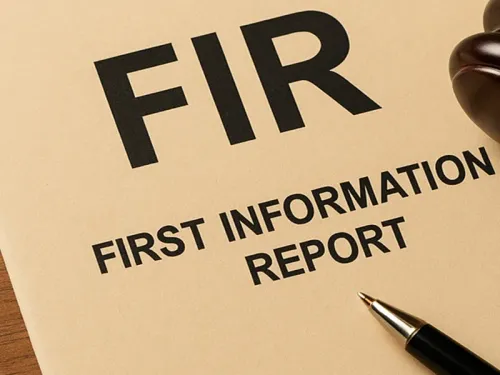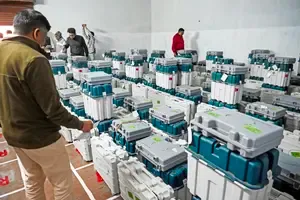Delhi Blast: What Do the Findings in Al Falah University Reveal About the Terror Plot?

Synopsis
Key Takeaways
- Diaries recovered from Al Falah University reveal critical insights into a planned terror attack.
- The investigation is now led by the NIA, ensuring thorough forensic examinations.
- Dr Umar's involvement in the Red Fort blast raises serious security concerns.
- Authorities are tracking the origins of the explosives used in the attack.
- Collaboration between law enforcement agencies is vital for national security.
New Delhi, Nov 13 (NationPress) An alarming discovery has emerged from the rooms of Dr Muzammil and Dr Umar Mohammad at Al Falah University, where a diary and notebook have unveiled significant insights into the orchestration of a terror attack. Authorities are convinced that the perpetrators had been engaged in a prolonged conspiracy as part of a broader, meticulously coordinated scheme.
According to investigative agencies, the diaries of Dr Umar Mohammad and Dr Muzammil have been confiscated, and they are anticipated to provide answers to pivotal questions concerning the Delhi Red Fort blast. The diaries were located on Tuesday and Wednesday in Dr Umar’s room number 4 and Dr Muzammil’s room number 13.
Additionally, police retrieved a diary from Muzammil’s quarters, where previously, 360 kg of explosives had been discovered in Dhauj, Faridabad, located approximately 300 meters from Al Falah University.
Investigators noted that the seized diaries and notebooks include coded language and references to dates spanning November 8 to 12, indicating that the planning was ongoing during this timeframe. The documents enumerate the names of around 25 individuals, predominantly from Jammu and Kashmir and Faridabad, as the investigation progresses.
In a related development, authorities confirmed that Dr Umar Mohammad, a senior physician at Al Falah University in Faridabad, was behind the wheel of the i20 vehicle that detonated near the Red Fort on November 10, claiming 12 lives and injuring multiple others.
Sources within the Delhi Police have stated that DNA test results unequivocally confirmed Umar’s identity, with the DNA sample matching perfectly with that of his mother and brother, dispelling any doubts about his presence in the vehicle during the explosion. The DNA was obtained from bone fragments, dental remains, and clothing recovered from the wreckage of the i20.
The devastating explosion occurred around 6:52 p.m. on November 10, reverberating throughout the national capital and triggering immediate security protocols. The blast transpired near one of India’s most iconic landmarks, raising concerns about a breach in the high-security zone surrounding the Red Fort.
Following the incident, the National Investigation Agency (NIA) has officially assumed control of the investigation from the Delhi Police’s Special Cell. NIA officials have secured the area and are conducting forensic assessments of the debris, including traces of explosives, vehicle parts, and digital evidence.
Initial findings suggest that the vehicle was fitted with advanced improvised explosive devices (IEDs). Investigators are currently tracking the source of the explosives and mapping Umar’s movements leading up to the explosion.
Sources have disclosed that Umar departed his residence in Faridabad earlier that day, informing colleagues he was attending a personal engagement in Delhi. Authorities are scrutinizing whether he acted independently or in collaboration with a larger network.
The explosion on November 10 occurred mere hours after the Jammu and Kashmir Police confiscated nearly 3,000 kg of explosives from two residential properties in Faridabad.









